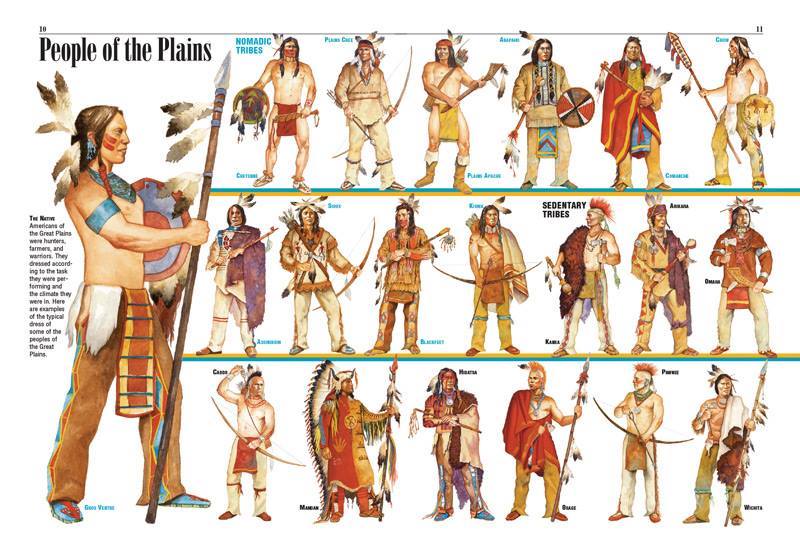
Similarly, the designs on Plains Indian clothing, such as
honors insignia on robes, in some instances had specific
meanings but in other cases simply provided decoration.
Dyed quillwork was originally used to decorate buffalo-
skin or deerskin shirts, vests, leggings, dresses, boots, and
moccasins. It was later replaced by beadwork. Fringes
added another decoration element to clothing. Other
articles of clothing commonly seen on the plains
included leather breechcloths in warm weather, and fur
robes, caps, and headbands in cold weather. Native
Americans also wore various types of headdresses.
The eagle-feather headdress, sometimes referred to as
a warbonnet, is the most recognizable of all Native
American clothing. At modern-day festivals and powwows,
one sees warbonnets on Indians of tribes from
other parts of North America. But this particular type of
headdress originated among the Plains tribes.
Only a few men wore warbonnets, those who earned the privilege to do so in warfare. War chiefs usually had the longest headdresses. The number of black-tipped tailfeathers of the male golden eagle represented the wearer’s exploits. The feathers were attached to a skullcap of buffalo or deerskin, with a brow band that was decorated with quillwork or beadwork and dangling strips of fur or ribbons. Additional downy feathers were tied to the base of the eagle feathers and tufts of dyed horsehair to their tips.